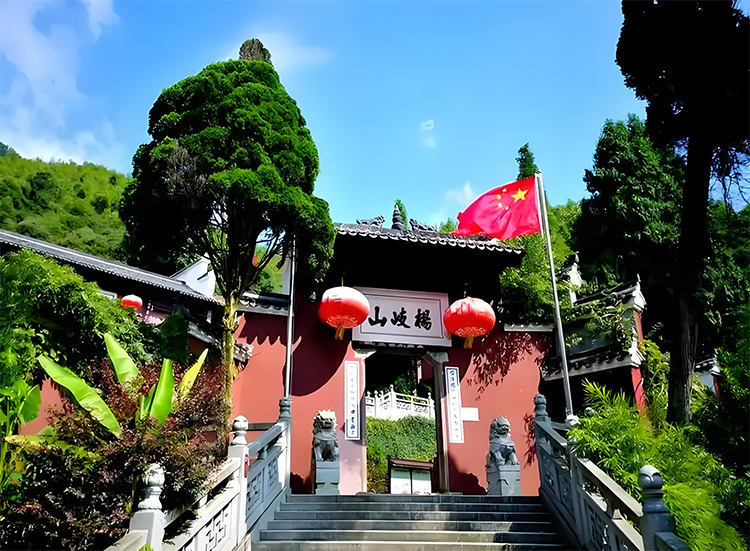Rhododendron Blooms at Yangqi Mountain: Zen Retreat, Caves & Wildflower Peaks
Introduction
When morning mist clings to the tips of bamboo groves and sutra chants drift through gaps in thousand-year-old ginkgo leaves, the story of Yangqi Mountain awakens. Tucked in western Jiangxi on the northern flank of the Luoxiao Range, this 4A scenic area is a living museum where Tang-dynasty temples, karst caves, rhododendron seas, and rime-frost valleys coexist. Whether you’re tracing the Yangqi School of Chan’s influence in East Asia or seeking fresh forest air, Yangqi Mountain’s layered attractions will reshape how you see Jiangxi’s landscapes.
1. Spiritual Totem: Symbiosis of Chan Heritage and Geological Wonders
“One mountain hides two marvels; lost in the clouds.” Yangqi’s core appeal lies in the rare pairing of Buddhist culture and karst geomorphology. As the birthplace of the Yangqi branch of Chan Buddhism, the Putong Temple (Putong Si) was founded in the High Tang era. Though restored over centuries, it still houses Song-era relics such as the “Old Temple Fragmented Stele.” The temple’s famous kōan—”the Yangqi lamp shines through the ages”—is still studied in Japanese Zen monasteries.
A few kilometers away, Nie Long Cave (“Wicked Dragon Cave”) reveals 4 km of underground labyrinth: stalagmites resembling Buddhas holding flowers, hidden rivers slipping like dragons into the abyss, and dripstone formations that, under light, take on shapes reminiscent of Dunhuang flying apsaras. The contrast between spiritual calm and raw geological drama is the mountain’s most compelling feature.
2. A Four-Season Poem: From Rhododendron Flames to Rime-Frost Palaces
Spring on Yangqi is an eruption of color. Elevation gradients create vertical galleries of rhododendrons: deep crimson at the foothills in March, pale pink and white near summits by May. The wild rhododendron stand around Wanshou Rock has been called “East China’s most untamed alpine flower sea” by China National Geography. In winter, when temperatures plunge, the Jiulongxi Wetland’s mist crystalizes on firs into rime frost, transforming the valley into a glittering crystal palace.
Summer and autumn showcase ecological theater: the square-shaped culms of triangle bamboo (fangzhu) challenge your expectations, thousand-year ginkgo trees carpet paths with golden leaves, and at night campers can spot the endangered Chinese merganser with binoculars from the campground.

3. Immersive Experiences: Chan Retreats, Cave Exploration, and Easy Treks
Beyond sightseeing, Yangqi offers multi-level immersive programs:
– Cultural: Putong Temple runs daily bell-and-drum sessions; monks guide visitors in copying the Yangqi doctrinal texts. On the 19th day of the second lunar month (Guanyin’s birthday), pilgrims from Japan and Korea often arrive in organized groups.
– Adventure: Nie Long Cave is fitted with safe boardwalks and lighting; guides explain geological features like “stone shields” and “cave beads.” Fit visitors can attempt the Five-Peak Traverse (12 km, about 6 hours).
– Family: The Jiulongxi Wetland has wooden birdwatching platforms and illustrated guides for children to identify iberian? (white pheasant species) and red-billed avian species; a craft workshop by the bamboo grove lets kids make simple bamboo zen wind chimes.
4. Practical Guide: Getting There, Tickets, and Avoiding Crowds
– How to reach: It’s about a 1-hour drive from Pingxiang city center (set navigation to “Yangqi Mountain Visitor Center”). The Shanghai–Kunming High-Speed Railway stops at Pingxiang North; a shuttle bus to the park runs hourly. From Nanchang, a self-drive via S38 takes around 2.5 hours.
– Ticketing: Peak season (March–November) combined ticket RMB 120 (includes Putong Temple, Nie Long Cave, and shuttle); off-season RMB 80. Entering before 7:00 AM can grant free admission to hear morning monastic recitation.
– Beat the crowds: Tour groups cluster in weekend afternoons; visit Thursday or Friday for quieter trails. Winter weekday rime-frost viewing yields the clearest conditions.

5. Food and Lodging: Vegetarian Simplicity and Mountain Flavors
Putong Temple’s dining hall (Wuguan) offers donation-based vegetarian meals (suggested RMB 10)—try the mushroom-and-tofu casserole; reserve an hour ahead. At the mountain base, Yangqi Mountain Villa serves western Jiangxi dishes—must-tries include Nie Long Cave fish specialties and bamboo-shoot stewed cured pork. Accommodation ranges from simple temple dorms (RMB 50/night, shared bathrooms) to the boutique B&B Bamboo Hidden Lodge at the park entrance, which offers an astronomy terrace and English-language service.
Conclusion
Yangqi Mountain resists easy definition. Geologists admire the cave strata; Buddhists find sudden insight beneath ancient eaves; ordinary visitors can sit beneath a ginkgo and feel time and nature pulse in unison. As more famous peaks succumb to commercialization, Yangqi retains a classical quiet—where, as the poet wrote, you can sit and watch clouds rise after walking to the water’s end. Bring curiosity, and Yangqi will remind you that true secret places are found in a mindful gaze at the world.


